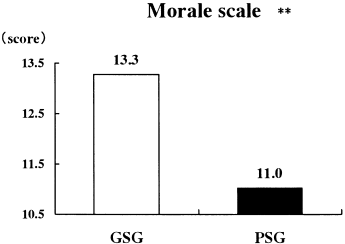Sleep health and lifestyle of elderly people in Ogimi, a village of longevity
Abstract
Abstract The study was conducted in the Prefecture of Longevity, Okinawa, on the elderly living in the village of Ogimi. It was revealed that those in the good sleep health group took short naps, a significantly fewer number fell into dozes, and a significantly greater number exercised regularly or walked. A significantly greater number of this group maintained regular eating habits over a 10-year span, and consumed more seaweed and fish. Participation in senior citizens’ clubs was higher, reflecting high emotional adaptability. The study’s results indicates a relationship between lifestyle and sleep health among the elderly, and suggest that deterioration of sleep health is related to physical and mental health.
INTRODUCTION
People living in Okinawa have the longest average lifespan in Japan, and the prefecture has the nation’s lowest death rate from the so-called ‘three major lifestyle-related diseases’. Okinawa also has the highest rate of centenarians per 100 000 population. We conducted a lifestyle study on the elderly living in Ogimi village in Okinawa prefecture. Lifestyles relevant to sleep health were analysed in terms of sleep health quality.
METHODS
Data analysis was performed on the responses of 109 elderly who responded to both the current survey and that of one conducted 10 years ago (37 men, 72 women, mean age 79.5 years). A standardized questionnaire1,2 on sleep health and lifestyle was used in the survey. The survey was conducted in October and November to avoid the rainy season, midsummer and midwinter, as climatic or other factors can affect behavior patterns. Staff members of the Local Health Promotion Program and welfare officers visited individual residences to distribute the questionnaires and provide thorough explanations on how to fill out the forms. The questionnaires were then collected 2 weeks later. All respondents lived a normal home life; people with debilitating diseases were not included in the survey. Analysis of sleep health focused on the following five factors: (i) factors related to sleep disturbances; (ii) factors related to parasomnia; (iii) factors related to sleep apnea; (iv) factors related to difficulty in waking up; and (v) factors related to difficulty in falling asleep. The total score of the five factors, or ‘sleep health risk index’, was evaluated to ascertain general sleep health.1,2 Subjects were ranked according to their sleep health risk index and categorised into either the good sleep health group (14 men, 26 women; mean age 81.5 years) or the poor sleep health group (15 men, 25 women; mean age 82.0 years) for comparisons.
RESULTS
Compared with the poor sleep health group, the elderly in the good sleep health group regularly took short naps (88.9%vs 66.7%, P < 0.1), as well as exercised three or more days a week (91.9%vs 74.3%, P < 0.01) and had walked often over the past year or more (83.3%vs 50.0%, P < 0.01). Members of the good sleep health group dozed off less (22.5%vs 44.7%, P < 0.05), especially during the evening hours before bedtime. In terms of what they ate, the good sleep health group consumed more seaweed, and there was a significant difference between the two groups regarding the consumption of fish (Table 1). In the good sleep health group, a significantly greater number of people participated in senior citizens’ clubs and activities, and enjoyed social contacts with greater frequency (87.5%vs 71.8%, P < 0.1). The current morale scores3 were also significantly higher among the good sleep health group (Fig. 1), reflecting their higher level of emotional adaptability.
| GSG | PSG | |
|---|---|---|
| Seaweed | 18 (46.2%) | 11 (27.5%) |
| Fish | 40 (100.0%) | 34 (87.2%)* |
- * P < 0.05 (χ 2 test, d.f. = 1).

. Comparison between good and poor sleep health groups using moral scale. PGC, Philadelphia Geriatric Center. **P < 0.01 by Student’s t-test, t = 3.2, d.f. = 78).
DISCUSSION
The results of the study indicated a clear relationship between lifestyle and sleep health of the elderly. It appears likely that poor sleep health is related to poor physical and mental health.4,5 Conversely, the results of the present study were derived from a limited sample population that is too small for drawing general conclusions. In order to determine whether or not the elderly living in Okinawa, Prefecture of Longevity, have generally better good sleep health, future studies should involve greater samplings, which are focused on gender differences, and comparisons with other regions should also be made.




